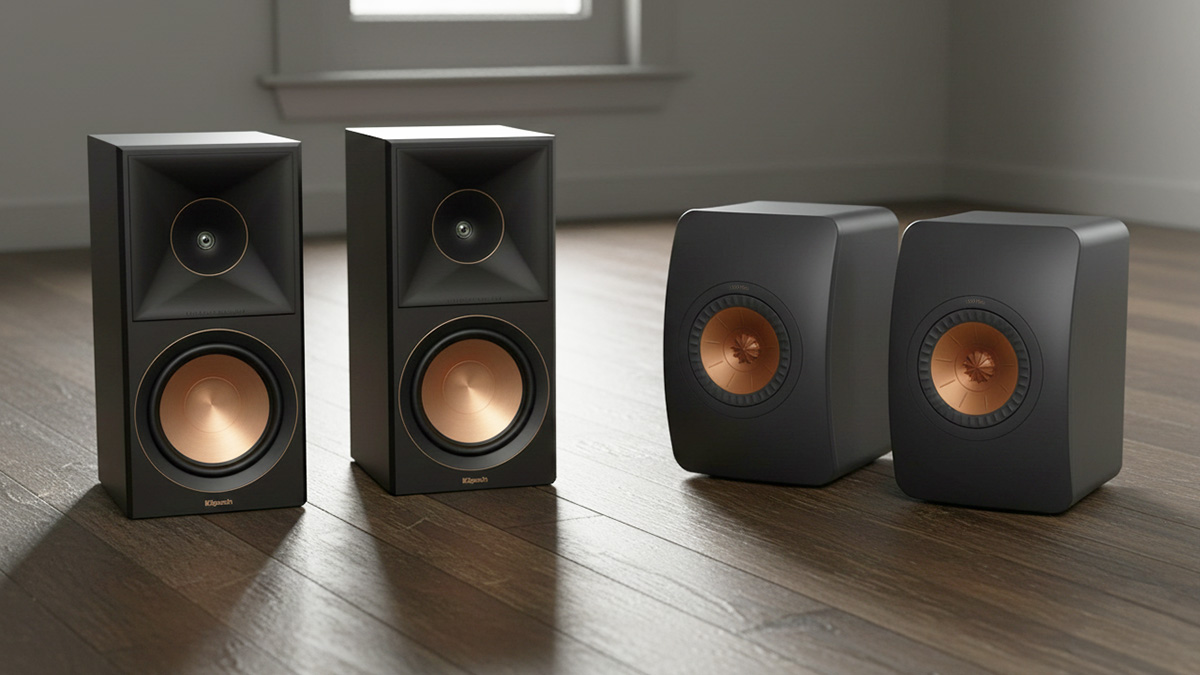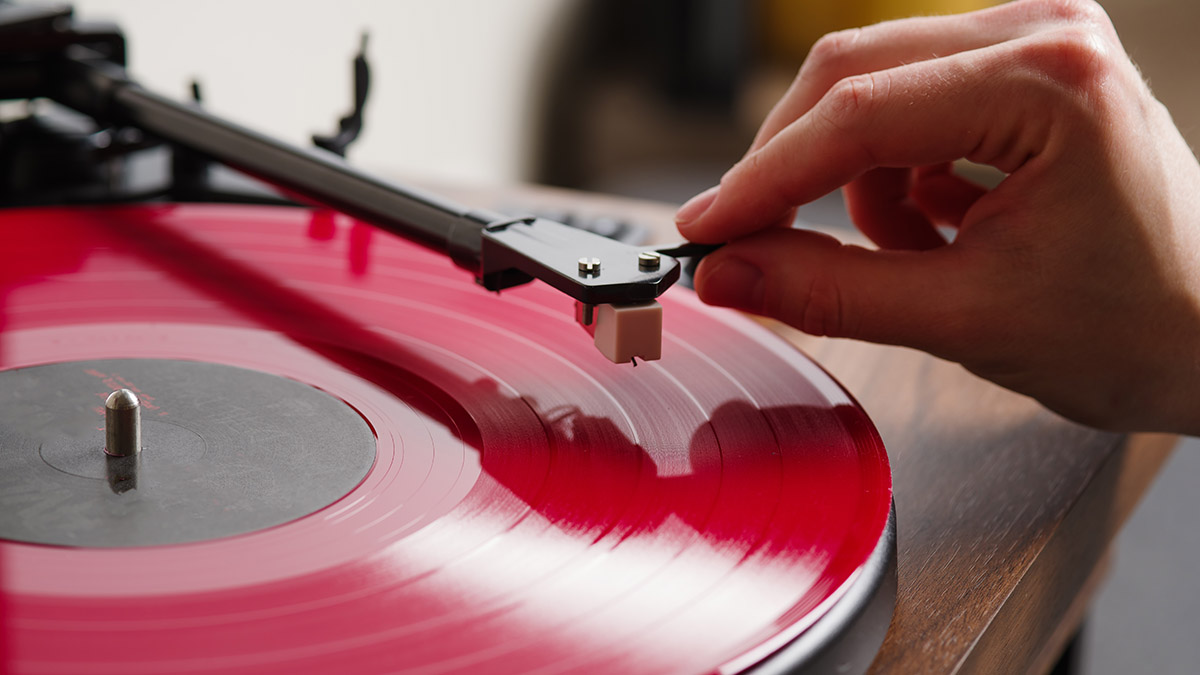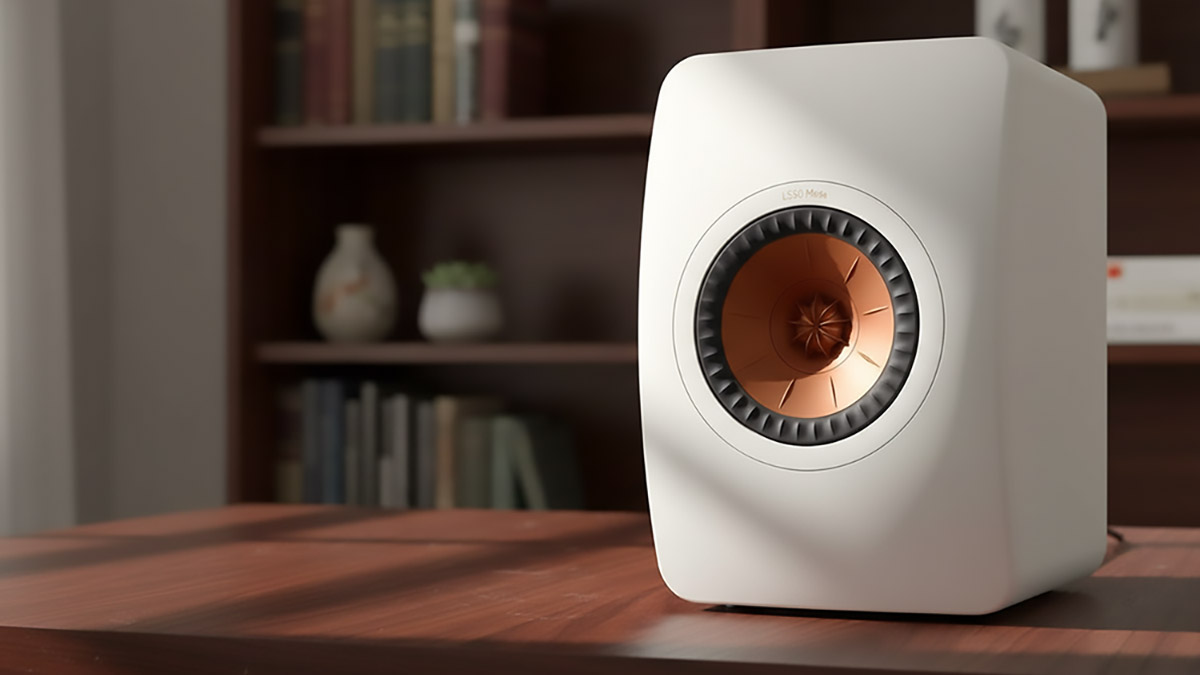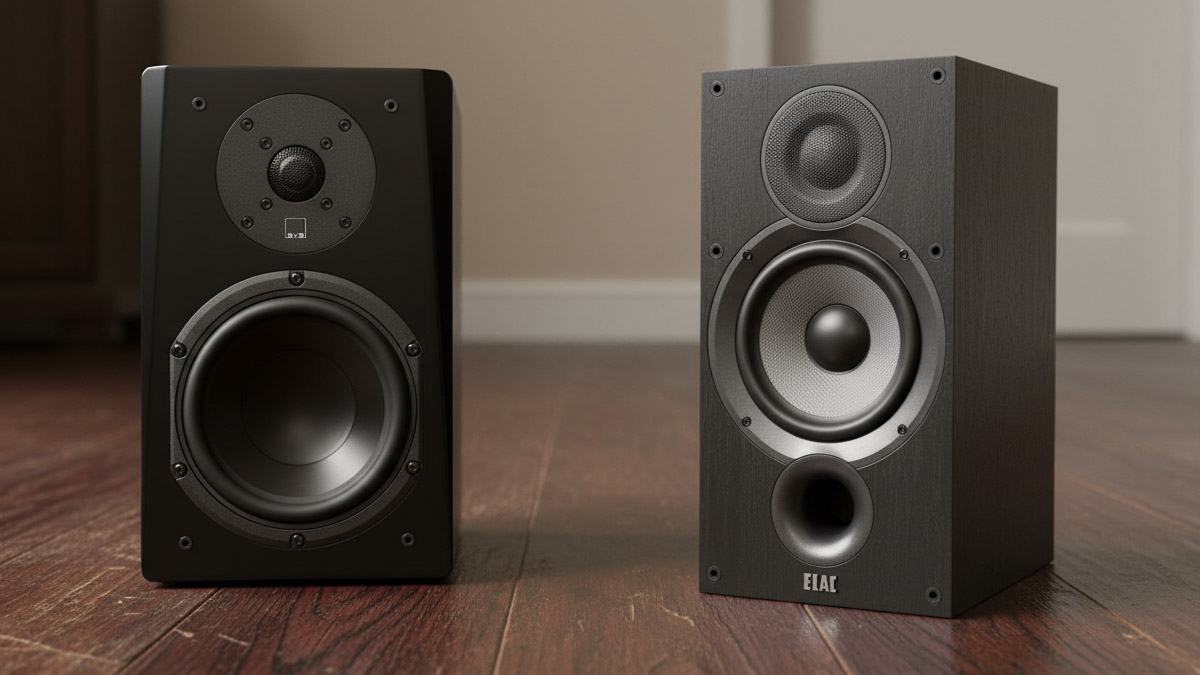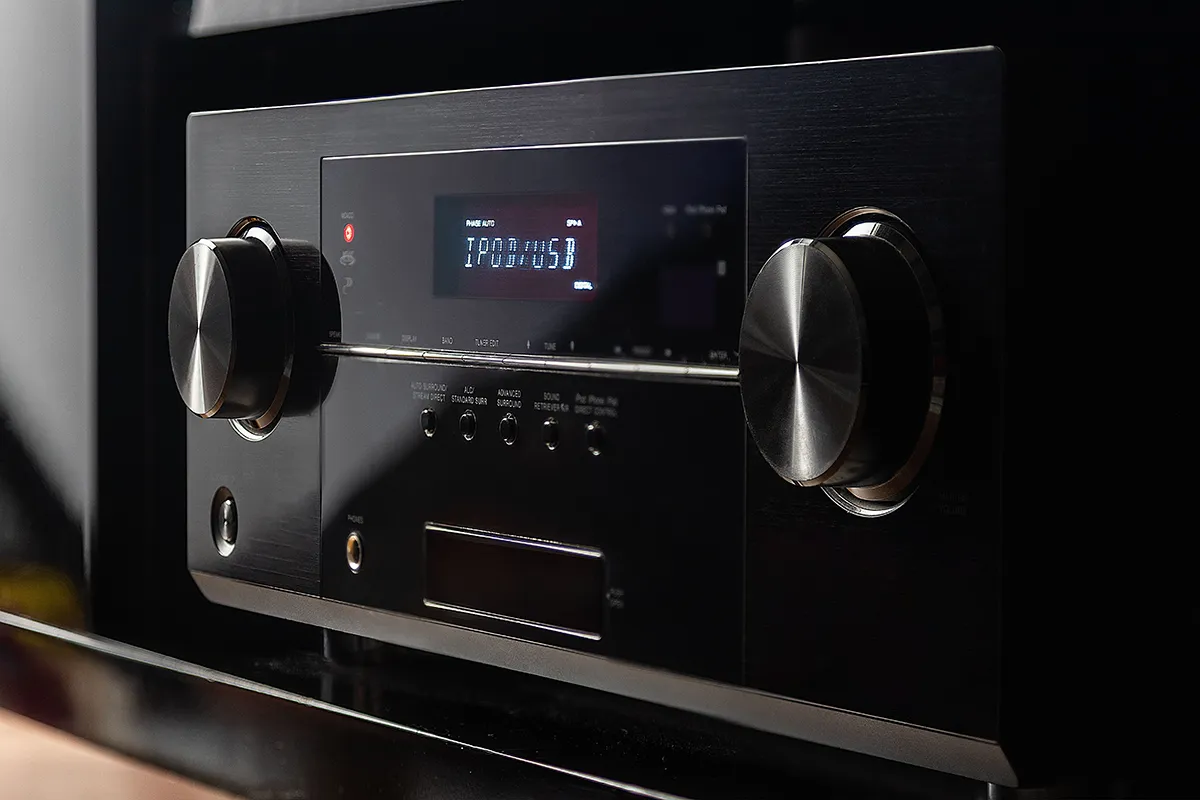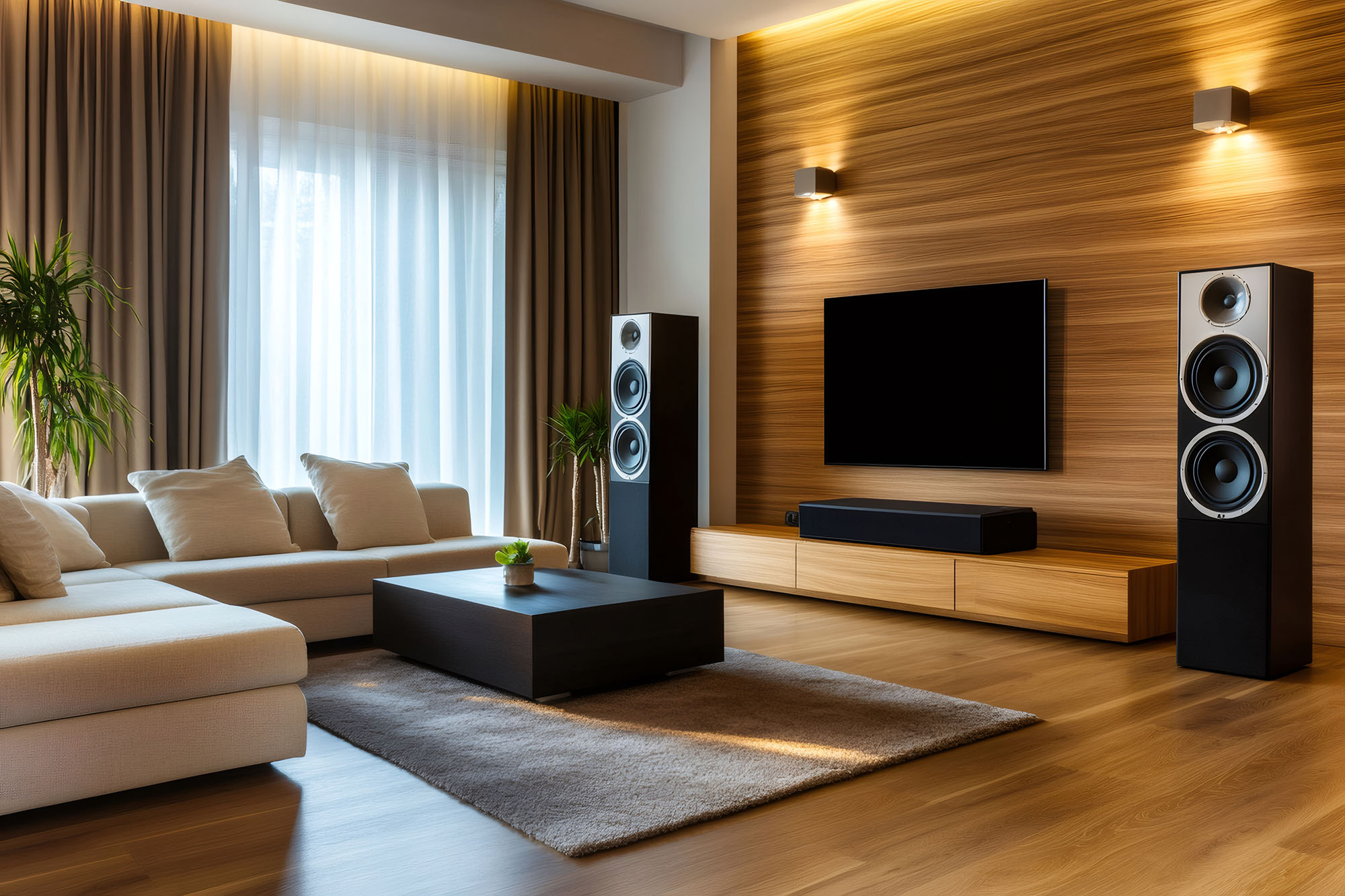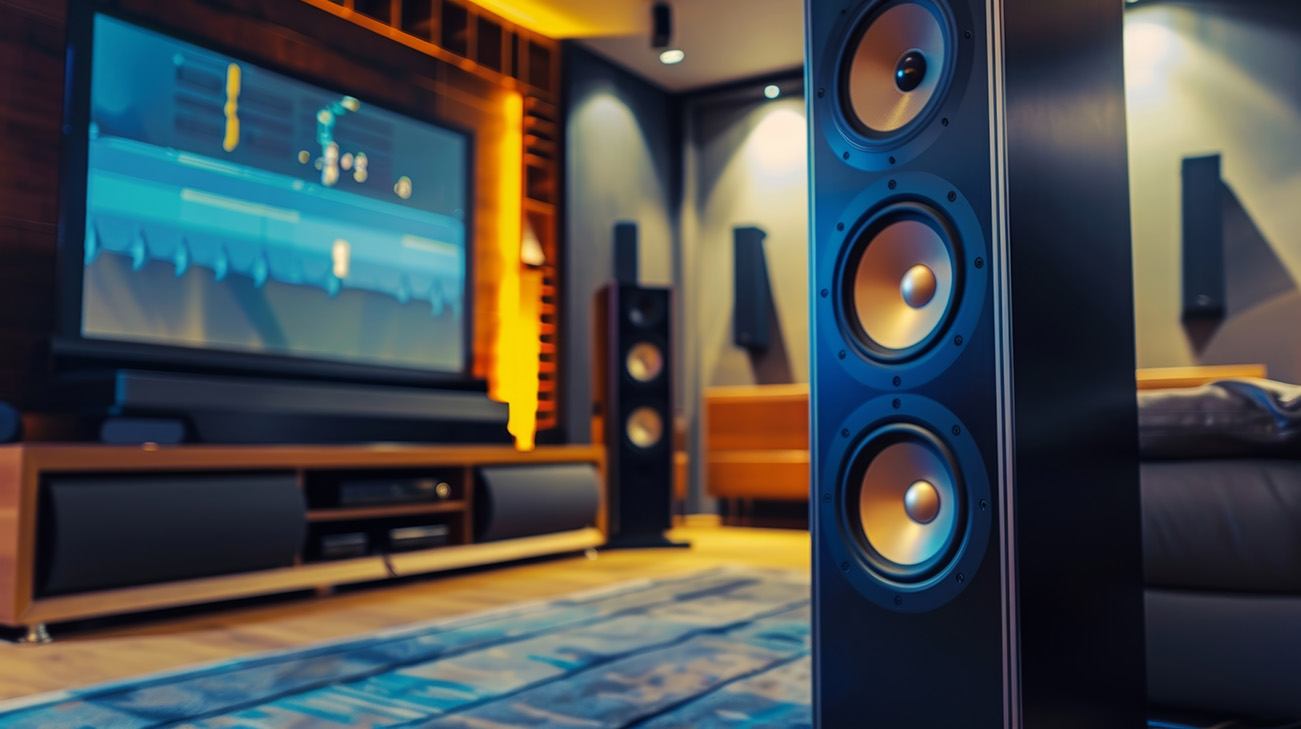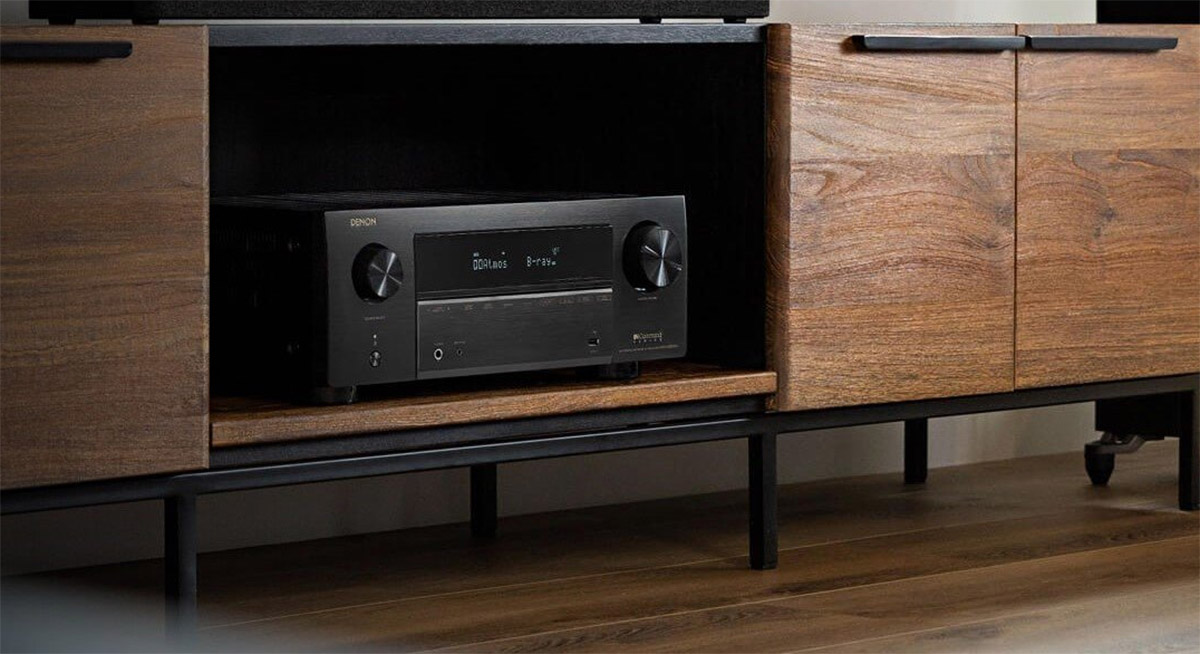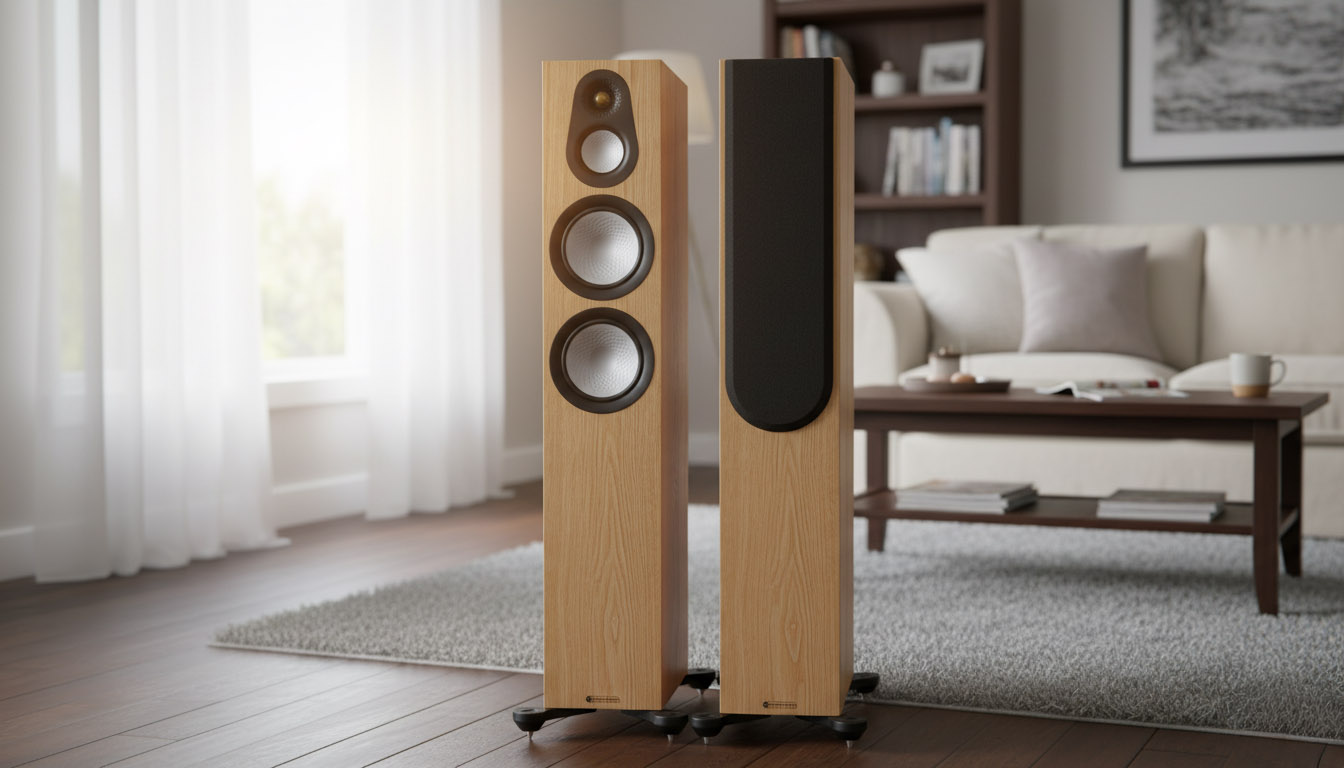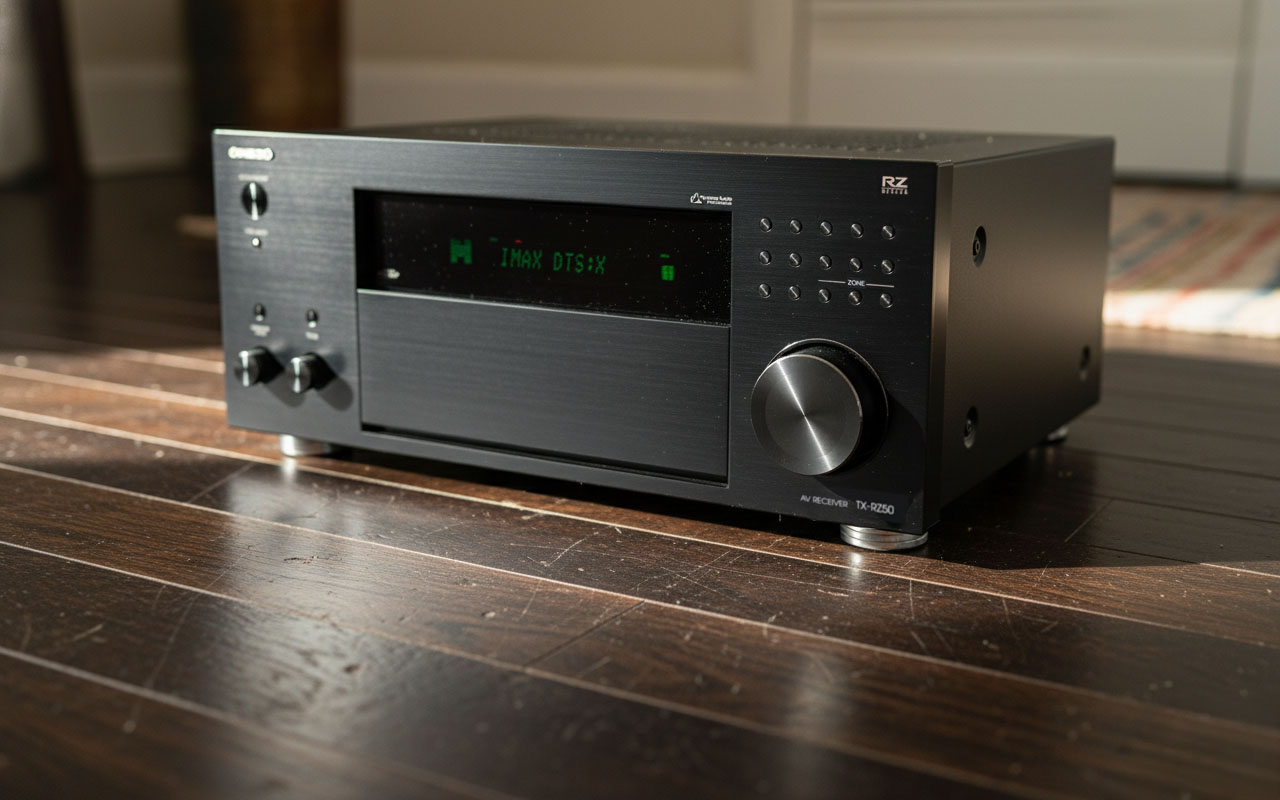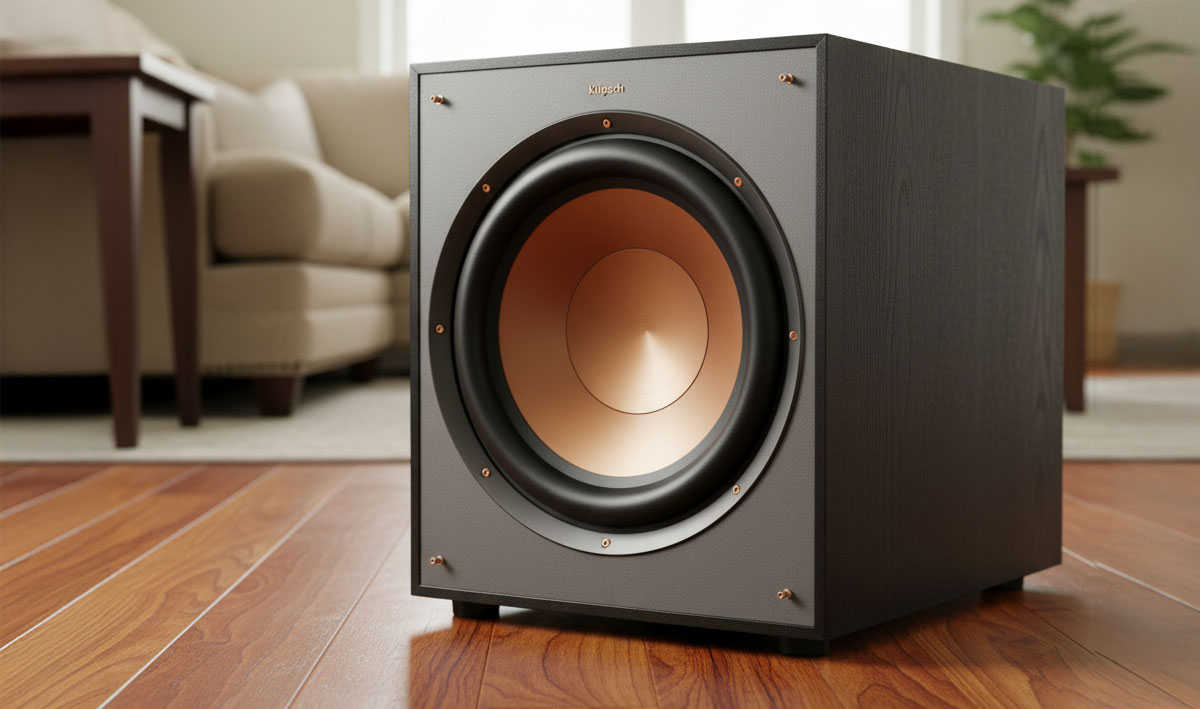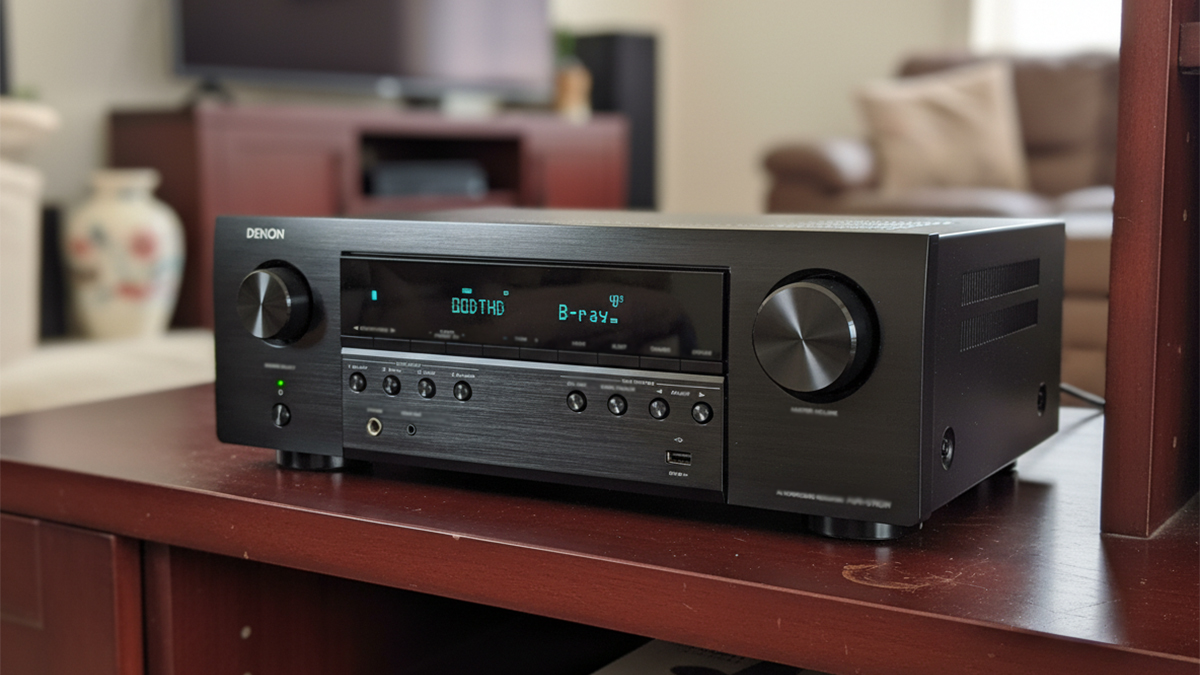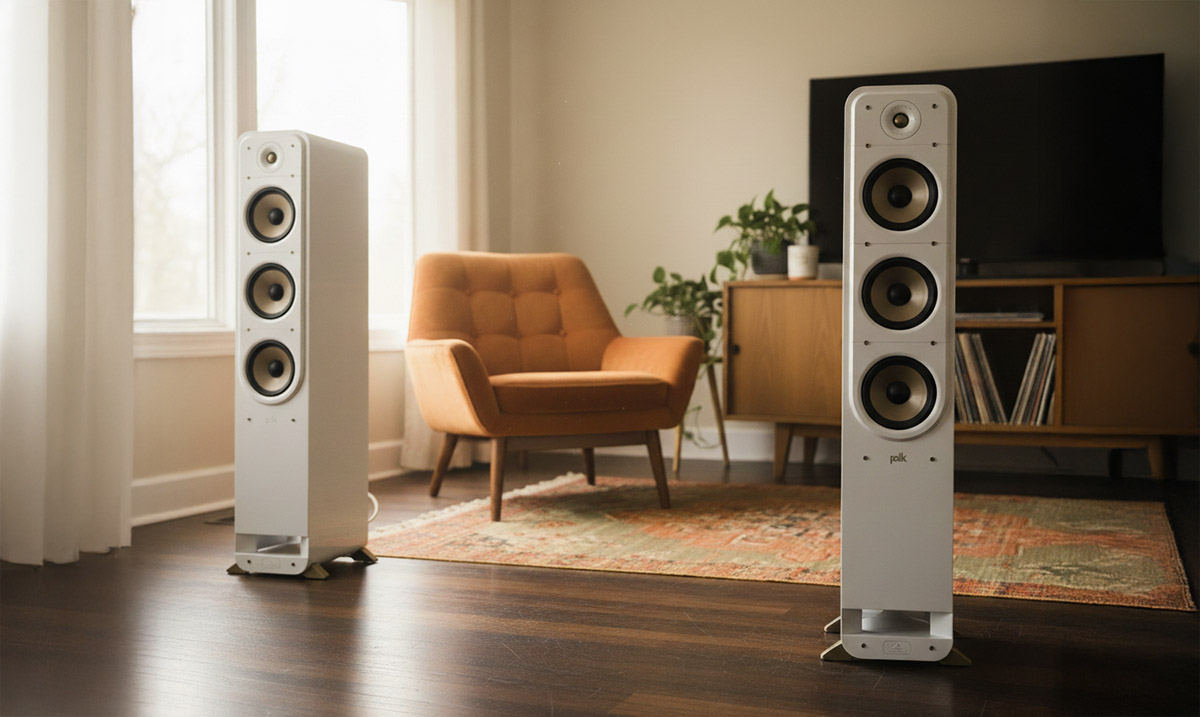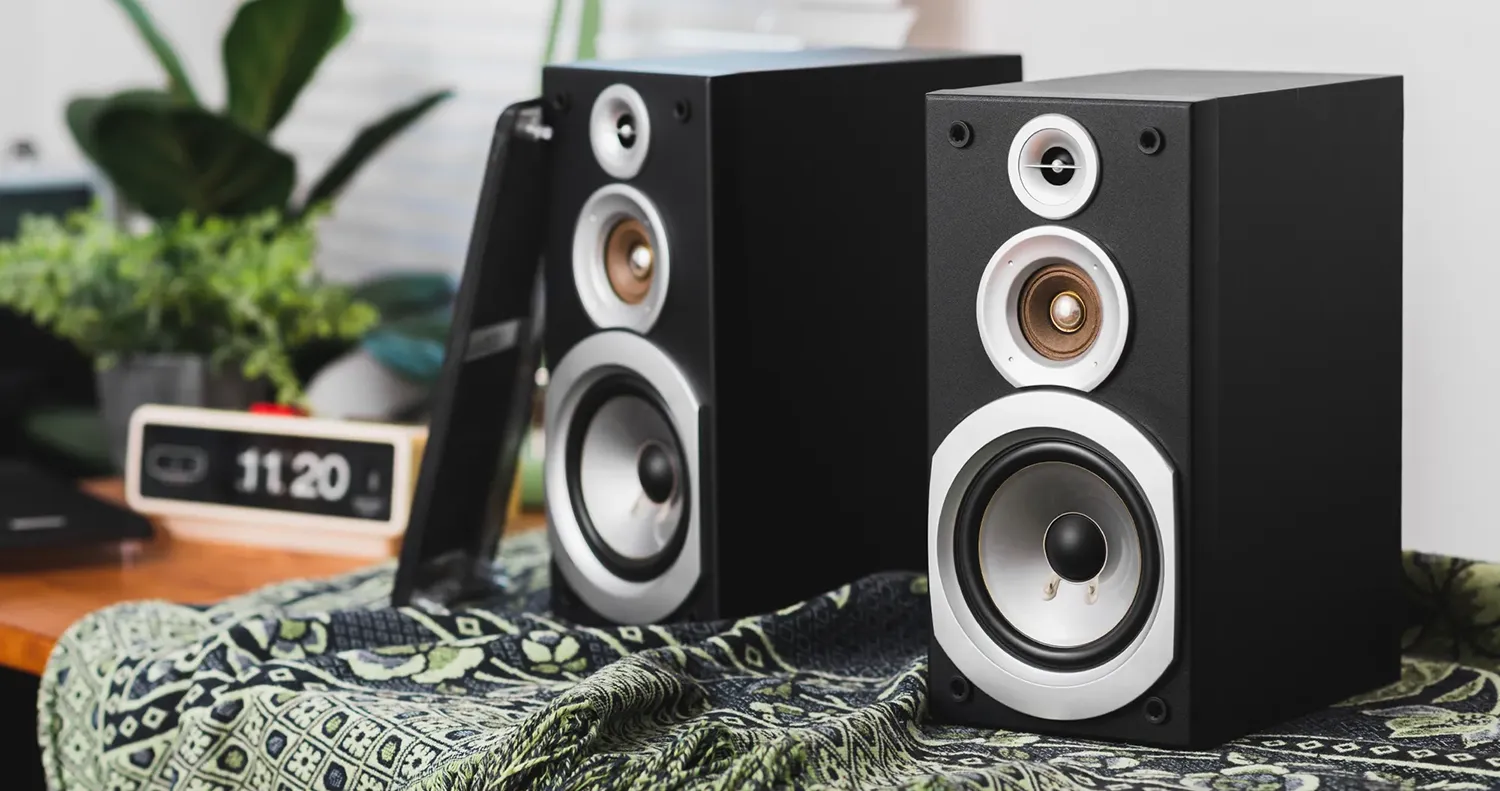You are staring at two very popular speakers that could not be more different in how they make sound. One uses a coaxial driver and clever damping to chase precision. The other leans on a horn and a larger woofer to deliver scale and kick. Both can sound wonderful. The trick is matching their strengths to your room, your ears, and your amplifier.
The Big Picture Differences
KEF LS50 Meta at a glance
KEF aims for focus and imaging. Its Uni Q driver places the tweeter in the center of the midbass cone, so the speaker behaves like a single point source. That geometry can paint a sharp stereo picture, with instruments and voices locked in place. KEF also uses a metamaterial back chamber behind the tweeter to absorb unwanted energy, which lowers treble hash and helps with clarity at low and medium volumes.
Klipsch RP 600M II at a glance
Klipsch chases efficiency and dynamics. It uses a one inch tweeter in a Tractrix horn for controlled directivity, and a six and a half inch woofer for solid bass from a compact box. Sensitivity is high, so it reaches lively levels with modest power. That makes it friendly to budget receivers and small integrated amps, and it keeps transients energetic even when the music gets busy.
How They Sound In A Real Room
Sit centered and close, and the KEF throws an impressively coherent stage. The sweet spot is not tiny, yet it rewards you when you give the speakers a clear line of sight and a little breathing room. Tonally, it leans honest and smooth rather than showy. Treble feels clean, midrange has nuance, and bass has texture more than weight. Add a well placed sub and the picture scales convincingly.
Move around a living room, and the Klipsch holds together with less fuss. Controlled directivity means more of the energy goes toward you, less splashes on side walls. That can keep dialogue intelligible and keep cymbals crisp a few seats off center. The presentation has drive, with kick drums and bass guitars carrying body at typical family room volumes. Treble is more forward, though the current generation is smoother than the first, and careful toe in keeps brightness in check.
Power And Amplifier Pairing
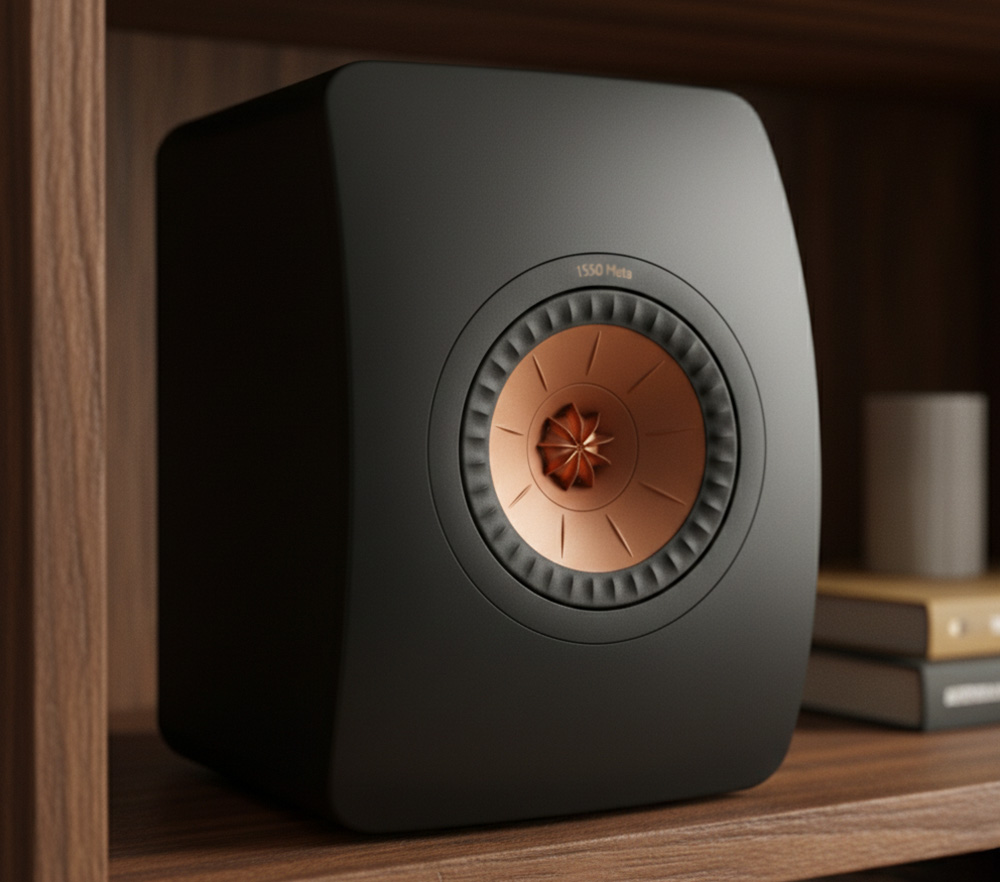
Best partners for KEF LS50 Meta
LS50 Meta is not hard to drive in a technical sense, yet it appreciates clean power. A compact class D integrated with honest current, or a solid state amp rated around 80 to 150 watts per channel into 8 ohms, wakes it up. Give it headroom and it will stay composed on orchestral peaks and dense electronic tracks. Tube lovers can succeed with stout push pull designs, but small tube amps often run out of gas.
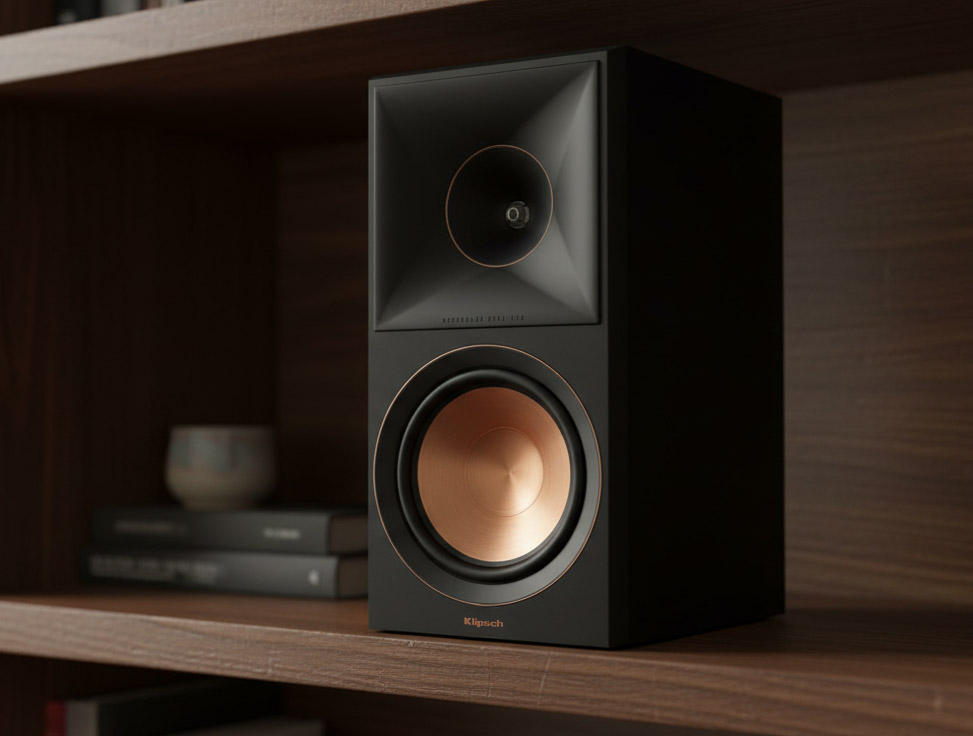
Best partners for Klipsch RP 600M II
RP 600M II is happy with almost anything. A sixty watt stereo receiver will get loud in a medium room. A modest class D amp will feel effortless. With more power the speaker opens up a touch further, though the primary benefit is grip in the bass, not outright volume. If you want to use a small tube amp for nearfield listening, the Klipsch is the easier match.
Placement And Room Interaction
Positioning tips for KEF
The KEF benefits from careful stands, tweeter at ear height, and a bit of space. Start twelve to eighteen inches from the back wall, toe in so the axes cross just behind your head, and nudge distance in small steps until the center image clicks. The rear port can energize the room if placed too close to a boundary, so do not shove them against the wall. Small changes matter here, and that is part of the appeal. When they lock in, you hear depth and height that belies the size.
Positioning tips for Klipsch
The Klipsch is quick to please. Begin nine to twelve inches from the wall, toe in slightly toward the main seat, and listen. If the treble feels hot, reduce toe in so the speakers fire past your shoulders. If bass feels a touch thick, pull them forward a few inches or place basic absorption at first reflection points. Stands help any bookshelf speaker, and the Klipsch is no exception, though it can sit on a sturdy console and still sound engaging.
Music And Movies, Where Each Shines
Acoustic music, small ensemble jazz, and vocal heavy records reveal why people buy the LS50 Meta. Micro detail emerges at sensible volume, pianos have even tone from left to right, and voices feel centered and natural. If you care about imaging, this speaker is addictive. Add a subwoofer and the system becomes a tiny high end rig that punches well above its footprint.
Rock, pop, and film soundtracks show the strengths of the RP 600M II. Drums have snap, guitars cut through without losing body, and effects spread wide even if you sit a little off axis. Dialogue in two channel TV use stays intelligible. With a musical sub and a smart crossover around 70 or 80 hertz, this speaker easily anchors a lively 2.1 living room system.
Measured Traits That Influence Real Listening
Sensitivity favors the Klipsch, which means you get more loudness per watt and reduce the chance your amp will clip during dynamic peaks. Directivity is more constant with the horn, which can lead to a consistent tonal balance across seats in lively rooms. The KEF counters with smoother off axis treble for a coaxial design, which pays dividends in nearfield and midfield setups where you sit centered. Distortion stays low on both at normal levels, yet the KEF keeps treble artifacts well tamed, while the Klipsch delivers low compression and punch in the upper bass.
Pros And Cons
KEF LS50 Meta
Pros
Superb imaging and focus, refined treble with low glare, compact cabinet that vanishes sonically, scales beautifully with a sub and quality power.
Cons
Lower sensitivity means you need a capable amplifier, bass weight is limited on its own, placement is more demanding.
Klipsch RP 600M II
Pros
High sensitivity and big dynamics, easy to drive, lively and open sound that remains clear off axis, strong value for the output.
Cons
Treble can feel forward if aimed directly at you, midrange tone is less even than the KEF in some rooms, cabinet finish is utilitarian compared with the KEF’s sculpture like look.
Who Should Pick Which
Choose the LS50 Meta if you sit eight to ten feet from the speakers, if you like to listen intently, and if you are willing to spend time on placement. It is a joy for late night sessions and for listeners who want a precise stereo stage. Pair with a clean integrated amp, add a compact sealed sub, and enjoy a system that feels purpose built for music.
Pick the RP 600M II if you want energy and headroom for mixed use, if your room is lively, and if you prefer to keep amplification simple. It is the friendlier partner for budget receivers, and it carries movie night without strain. Place well, roll a little toe out if needed, and you get a fun, confident sound that works for the whole family.
Smart Setup Tips For Both
Use sturdy twenty four inch stands so tweeters land near ear height. Keep the fronts of the cabinets flush with or slightly forward of the stand top to avoid reflections. Run a basic sub crawl to find an even bass position if you add a sub, then set the crossover by ear after a week of listening. Small trims, one or two decibels at a time, are your friend.
Strong Alternatives If You Are On The Fence
- Polk Reserve R200 offers a balanced, dynamic sound and excellent bass reach for its size, a strong middle path between the two.
- ELAC Debut Reference DBR62 delivers a warm, detailed presentation that flatters a wide range of recordings, with forgiving placement.
- Wharfedale EVO 4.2 uses an AMT tweeter for smooth, airy highs and presents vocals with real presence, great for acoustic and vocal fans.
- Q Acoustics 3030i gives generous bass and an easygoing tone at a friendly price, ideal for living rooms that want music and TV duty without fuss.
- Dynaudio Emit 20 brings a refined midrange and excellent dynamics once you give it solid power, a good pick for listeners who split time between rock and chamber music.
Price And Value
The KEF usually costs meaningfully more per pair than the Klipsch. That premium buys fit and finish, advanced driver engineering, and a level of imaging that few speakers in this footprint match. The Klipsch often sells for much less, which buys you output, sensitivity, and a lively presentation that remains satisfying with everyday gear. Neither is the wrong answer. Value is about how you listen and what you already own.
A Simple Decision Tree
- If you want laser cut imaging, listen in a centered seat, and can budget for a capable amplifier, choose KEF LS50 Meta.
- If you want toe tapping energy, play across a couch, and prefer an easy match with modest power, choose Klipsch RP 600M II.
- If you want a compromise of both, start with Polk R200 or ELAC DBR62, then revisit the KEF and Klipsch after a week with your own room.
Bottom Line
These are two excellent speakers with distinct personalities. The KEF is the studio lens, the Klipsch is the front row ticket. Match one to your room and your habits, give it a patient setup, and add a well integrated sub when you can. Do that, and either pair will reward you with sound that feels alive, with music that invites another track instead of another tweak.

